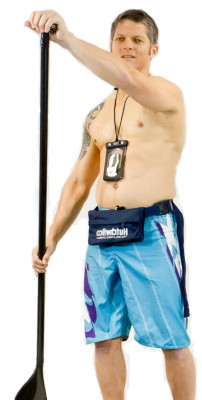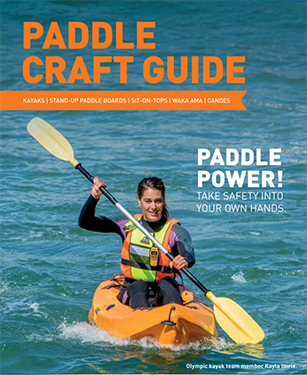Paddle craft
Kayaking
The Waikato region is a sea and fresh water kayaking paradise, but there are some things to keep in mind to stay safe on the water.
Before you head out kayaking always know what you might encounter on the way - check out our list of identified river hazards.
Essential requirements for safe paddling
- Take the right equipment including a properly fitting lifejacket, a communications device, a pump, sprayskirt
- Check the weather forecast before heading out - www.metservice.co.nz
- Let someone know where you are going and when you will be back
- Never canoe or kayak alone
- Make sure you'll be clearly visible to other craft on the water
- Know your limitations
- Talk to a local if you're paddling in a new area - contact the local canoe / kayak retailor or local coastguard unit
Make sure the kayak is clearly marked with emergency contact details - see vessel i.d. requirements for more information.
Paddling at night
Maritime rules require that as a minimum, kayakers must carry a torch to prevent collision. A suitable alternative is a head torch that will allow your arms to be free to paddle. In addition, mounting an all-round white light on your rear deck above head-height means you will be visible from all directions.
Kayak identification requirements
Your kayak must be marked with emergency contact details somewhere on the kayak that is clearly visible.
- You could write with waterproof marker.
- Laminate a card and attach it.
- Write on waterproof tape.
For full information go to clause 5.5 of the Navigation Safety Bylaw.
Stand up paddle boarding

Stand up paddle boarding is a fast growing sport. It's a great way to keep fit while you're enjoying the region's magnificant waterways. Make sure you keep yourself safe by following these simple rules and guidelines.
Rules
- You must wear a lifejacket at all times.
- You must carry at least one form of waterproof communications with you, this could be a cellphone in a drybag.
Exceptions to the rules:
-
- Stand up paddle boards in the surf are exempt from carrying communications or carrying a lifejacket (or PFD) as long as they are leashed to the board.
- Stand up paddle boards in the surf are exempt from carrying communications or carrying a lifejacket (or PFD) as long as they are leashed to the board.
Guidelines
- Consider using a leash, this will keep you and your board together.
- Avoid areas with heavy boat traffic, strong currents, and dangerous outcroppings.
- Keep a safe distance from swimmers.
- Get a lesson from a professional paddleboard instructor/school.
- Always let someone know where you are going and when you'll be back.
- Check the weather and tides before heading out.
- Learn the basics in flat, calm water.
- Stay safe and paddle with a mate.
>>> Read the Paddle Craft Guide





To ask for help or report a problem, contact us
Tell us how we can improve the information on this page. (optional)